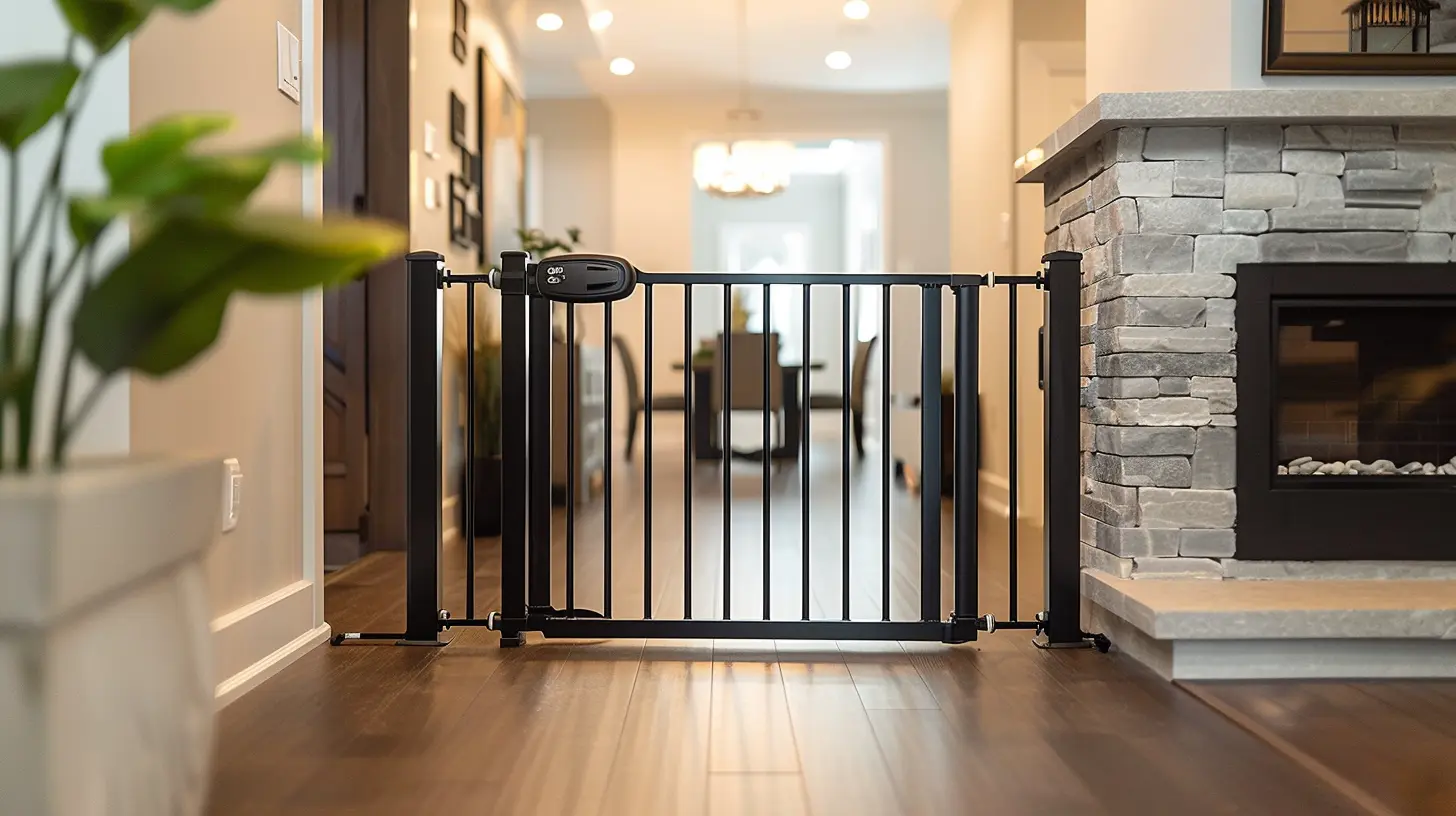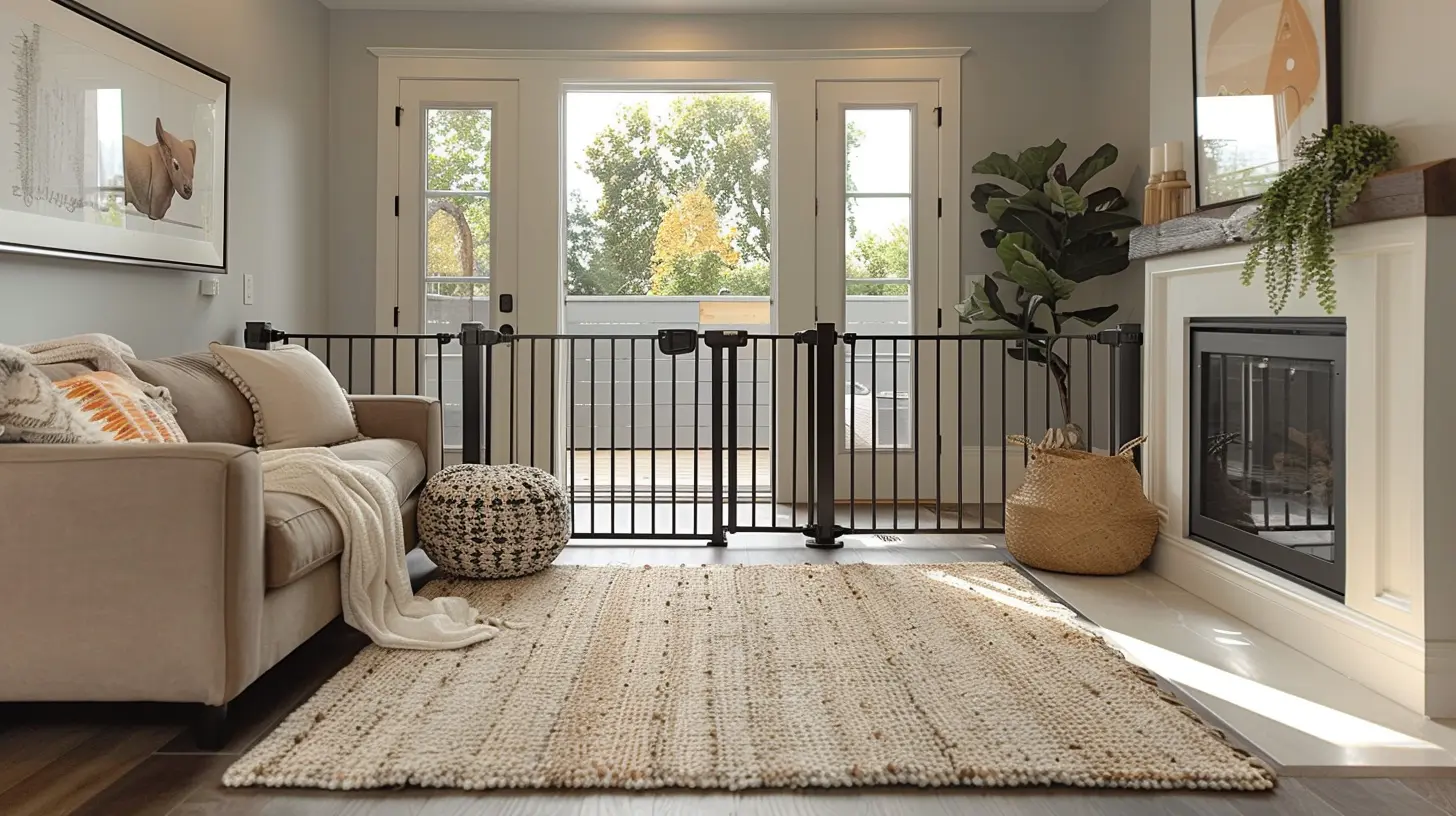How to Choose the Right Baby Gates for Your Home
7 May 2025
As new parents, we quickly realize that our little ones have a natural curiosity that knows no bounds. One moment they’re sitting quietly, and the next, they’re speed-crawling toward the staircase like tiny explorers. That’s where baby gates come in—they're like a superhero sidekick for parents, keeping our precious little adventurers safe from potential dangers around the house.
But with so many baby gate options out there, how do you pick the right one? Don’t worry—I’ve got you covered! In this guide, we’ll walk through everything you need to know to choose the perfect baby gate for your home.

Why Baby Gates Are a Must-Have
Baby gates aren't just about convenience; they are an essential part of childproofing your home. Whether you have stairs, open doorways, or areas in your home that aren’t kid-friendly (think kitchens, fireplaces, or balconies), a sturdy baby gate can prevent accidents and give you peace of mind.Not only do baby gates keep your little one safe, but they also help you create safe play areas where your baby can explore freely without constant supervision. Think of them as guardrails on a highway—they provide boundaries while still allowing your little one to navigate safely. 
Types of Baby Gates: Which One Do You Need?
Not all baby gates are created equal. Depending on where you plan to use them, you’ll need to choose the right type to suit your home’s layout and safety needs.1. Pressure-Mounted Baby Gates
These gates use tension to stay in place, meaning they don’t require any screws or permanent installation. They’re great for blocking off doorways or hallways where falling isn’t a big concern.✅ Easy to install and remove
✅ Perfect for renters (no drilling required!)
❌ Not ideal for staircases—pushing too hard can cause them to fall
> Ideal for: Blocking doorways, hallways, or separating rooms
2. Hardware-Mounted Baby Gates
If you need a gate for the top of the stairs, this is your best bet. These gates require screws to be securely mounted into the wall, ensuring they don’t budge—even if your toddler leans against them with all their might!✅ Perfect for high-risk areas like stairs
✅ Extremely sturdy and safe
❌ More work to install (you’ll need a drill!)
> Ideal for: Top of staircases, areas where extra security is needed
3. Retractable Baby Gates
These gates work like a roll-up shade—they extend when needed and roll away when not in use. They’re a sleek, space-saving option for parents who don’t want a bulky gate permanently in place.✅ Doesn’t take up much space
✅ Great for irregular openings or wide spaces
❌ Some models may not be as sturdy as fixed gates
> Ideal for: Wide openings, doorways, and homes where space is a concern
4. Freestanding Baby Gates
These gates don’t require installation at all! Instead, they stand on their own, making them great for temporary or travel use.✅ No installation needed
✅ Portable and versatile
❌ Not as secure as mounted gates—determined toddlers can push them over
> Ideal for: Temporary use, travel, or play areas 
What to Consider When Choosing a Baby Gate
With so many options, how do you choose the right baby gate for your home? Keep these key factors in mind:1. Where Will You Use It?
Before buying a gate, consider where you’ll install it. For staircases, always go with a hardware-mounted gate. For keeping rooms off-limits, a pressure-mounted gate is a great choice.2. Size and Adjustability
Measure the width of the space you need to block and ensure the gate you choose fits properly. Some gates come with extensions to accommodate wider openings.3. Material and Durability
Baby gates come in wood, metal, and plastic. Metal gates tend to be the most durable, while wooden gates blend seamlessly with home décor.4. Ease of Use
Nothing is more frustrating than a gate that’s a pain to open and close—especially when you’re holding a baby in one hand and a coffee cup in the other! Look for gates with an easy one-hand operation feature.5. Height of the Gate
If your baby is a climber, consider getting a taller gate to prevent them from figuring out an escape plan. Most gates are around 30 inches tall, but taller models are available.6. Locking Mechanism
A gate with a secure locking mechanism is crucial. Some gates have auto-close features, while others require you to lock them manually. Choose one that feels secure but isn’t too complicated to operate.7. Pets in the Home
If you have pets, you might want a baby gate with a built-in pet door so your furry friends can pass through while keeping your baby safe.
Installation Tips for Extra Safety
Even the best baby gate won’t do its job if it’s not installed correctly. Here are some tips to ensure maximum safety:- For staircases: Always use a hardware-mounted gate for the top of the stairs to prevent falls.
- Check for gaps: Make sure your gate doesn’t have large gaps where little hands (or heads!) could get stuck.
- Regularly inspect the gate: Over time, gates can loosen. Check them periodically to ensure they remain secure.
- Follow the manufacturer’s instructions: Every gate is different, so read the manual carefully when installing.
Common Mistakes to Avoid
Even the best-intentioned parents can make mistakes when installing or using baby gates. Here are a few common pitfalls to watch out for:❌ Using a pressure-mounted gate at the top of the stairs – These gates can be pushed over, creating a serious fall hazard.
❌ Not securing the gate properly – Always double-check that the gate is locked and stable before leaving your baby unattended.
❌ Choosing the wrong size – A gate that doesn’t fit properly won’t be as secure as it should be. Measure your space before purchasing!
❌ Forgetting to remove the gate when it’s no longer needed – Once your child is old enough to open or climb over the gate, continuing to use it can create a false sense of security.
Frequently Asked Questions (FAQs)
1. At what age should I start using a baby gate?
Most parents start using baby gates when their little one begins to crawl—typically around 6-9 months old.2. When should I stop using a baby gate?
You can remove the baby gate once your child is around 2-3 years old and can safely navigate stairs without assistance.3. Can I use a pet gate instead of a baby gate?
Pet gates may look similar, but they aren't built to the same safety standards as baby gates. Always choose a gate specifically designed for babies to ensure proper protection.4. Can I use a baby gate outdoors?
Some baby gates are designed for outdoor use, but most indoor gates won’t hold up to weather conditions. If you need one for decks or patios, look for a weather-resistant model.Final Thoughts
Choosing the right baby gate is one of the best ways to ensure your little one’s safety while giving them the freedom to explore. Whether you need a sturdy hardware-mounted gate for the stairs or a versatile pressure-mounted gate for doorways, investing in the right baby gate will provide peace of mind as your baby grows and becomes more adventurous.Remember, parenting is all about balancing safety and independence. With the right baby gate in place, your child can explore their surroundings safely while you enjoy a little more breathing room. Happy parenting!
all images in this post were generated using AI tools
Category:
ChildproofingAuthor:

Max Shaffer
Discussion
rate this article
5 comments
Abram McFarlin
Choosing the right baby gate requires careful consideration of safety, space, and your child's mobility. Remember, the best gate is one that fits your lifestyle and keeps your little one secure while allowing freedom to explore.
May 22, 2025 at 4:45 AM

Max Shaffer
Absolutely! Prioritizing safety and lifestyle needs is key to finding the perfect baby gate for your home. Thank you for your thoughtful comment!
Etta Wright
Choosing the right baby gate is crucial for safety and convenience. Consider factors like gate type, material, and height to match your home’s layout. Ensure it's easy to use one-handed and fits securely in place. A good gate should blend functionality with your home’s decor while providing peace of mind.
May 14, 2025 at 3:57 PM

Max Shaffer
Thank you for your insightful comment! Choosing the right baby gate indeed balances safety, convenience, and home aesthetics.
Rayna McSweeney
Great tips! Consider the gate height and frame material for safety and durability. Also, check if it’s easy to install and use regularly.
May 11, 2025 at 3:57 AM

Max Shaffer
Thank you! Those are excellent points to keep in mind when selecting the right baby gate. Safety and convenience are key!
Lindsey Pacheco
Safety first—choose wisely!
May 10, 2025 at 2:43 AM

Max Shaffer
Absolutely! Safety is paramount when selecting baby gates; always prioritize features like sturdiness and ease of use.
Fatima Carter
Choosing the right baby gates is essential for ensuring your child’s safety at home. Consider factors like gate height, material, and installation type. Look for options that meet safety standards and fit your space without compromising access. Always supervise your child around gates to prevent accidents and ensure their safety.
May 9, 2025 at 2:55 AM

Max Shaffer
Thank you for your insightful comment! You're absolutely right—choosing the right baby gate is crucial for safety, and considering those factors makes all the difference.




